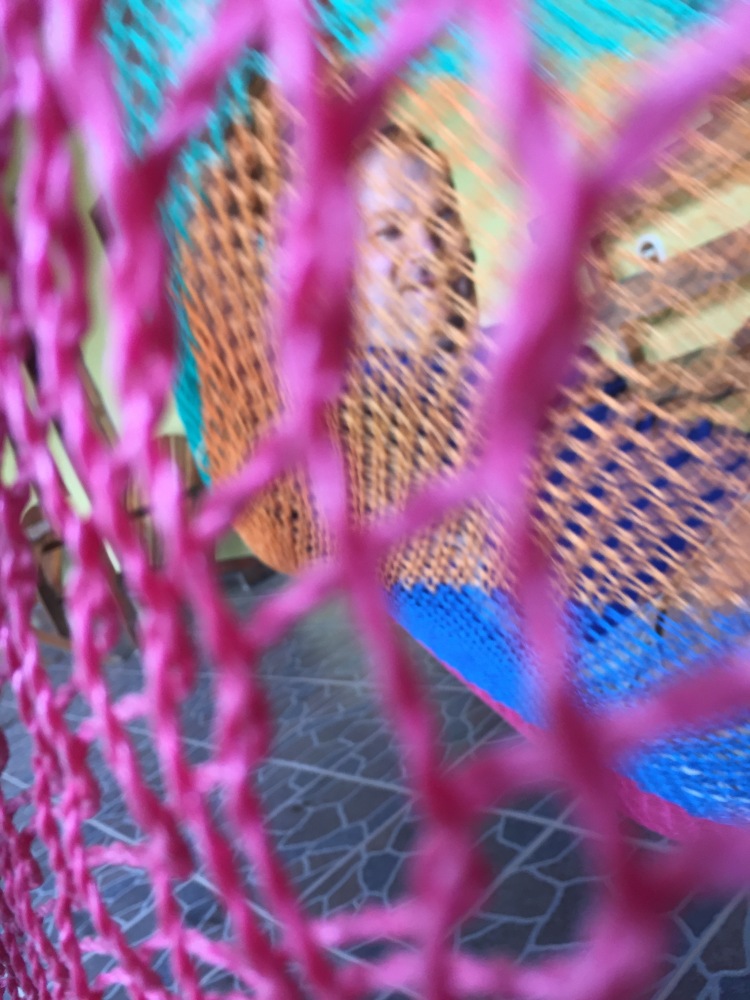Our last stop in El Salvador was Perquín, a town in the northeastern mountains, and seat of the revolutionary movement (and now political party) FMLN. After seeing the “official” government museum with exhibits on the civil war – and with the “peace treaty” and “aftermath” exhibits suspiciously closed – we were eager for a balancing perspective. And, after a few days in San Salvador, we were eager to escape the heat!

On the way to Perquin from SS, we made a couple stops. First, we stopped into the colonial town of Suchitoto, often referred to as the cultural capital of El Salvador. As with all colonial cities in Mexico and Central America, even if you don’t stay, it’s great to wander around and look at the buildings for an hour, and Suchitoto also had some intriguing art galleries and a great coffee shop to recommend it. (Proof that the backpacker circuit is small, we also ran into John, who we had first met at the hostel in Juayúa.)
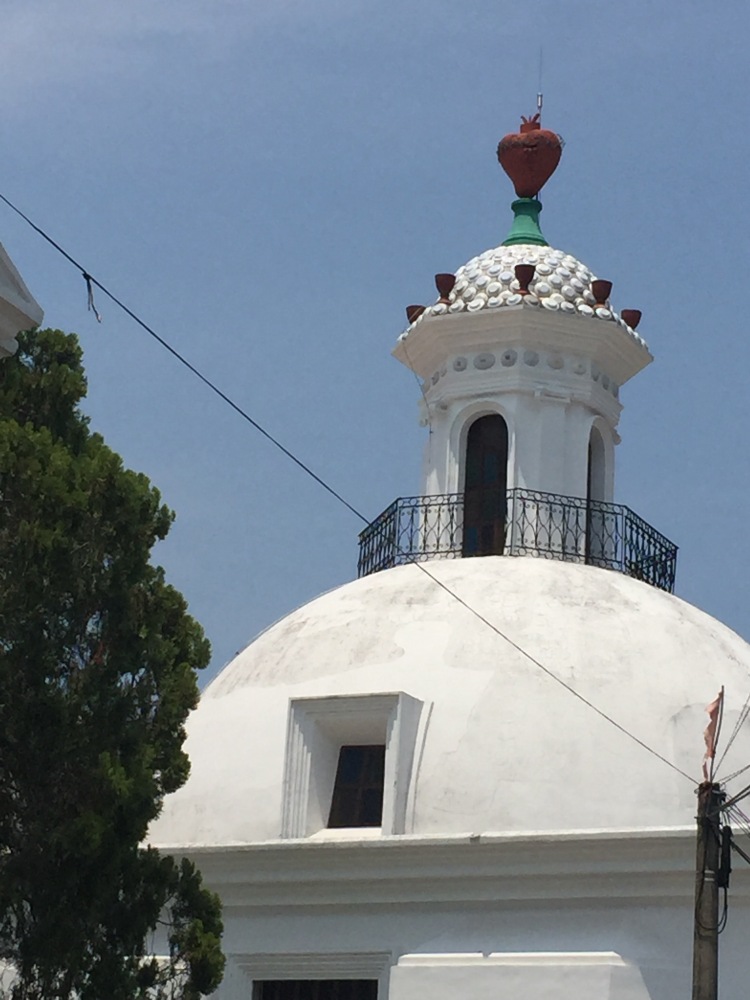
We drove onwards to an overnight stop in Alegría. Our first hope had been to stay in the town of Berlín, close by to Alegría (named of course by 19th century German coffee hipsters). The town didn’t have a lot to offer, though, and the only inn around had sky high (we thought) prices for the amenities offered. So we moved on to the entirely more tourist-appropriate venue of Alegría, where we ran into a giant food festival and plenty of local tourists also escaping the Sunday heat. We wandered around town for a while, enjoying the panoramic views and beautiful murals, got some reasonable fajitas for dinner, then settled for the night.

The next day, after a lovely chat with co-guests and fellow overlanders Janette and Steve, who are having an adventure that dwarfs most other adventures, we set off towards Perquín, but not without stopping first at a local pinchazo. We had been monitoring tire pressure in our right rear tire since San Salvador, and finding it again wanting, we knew we had a slow leak. Sure enough, when we got there, and the guy got the tire off, there was a nail embedded in it. So that’s flat tire number two, just after bragging to Janette and Steve that we’d only had one. Figures!
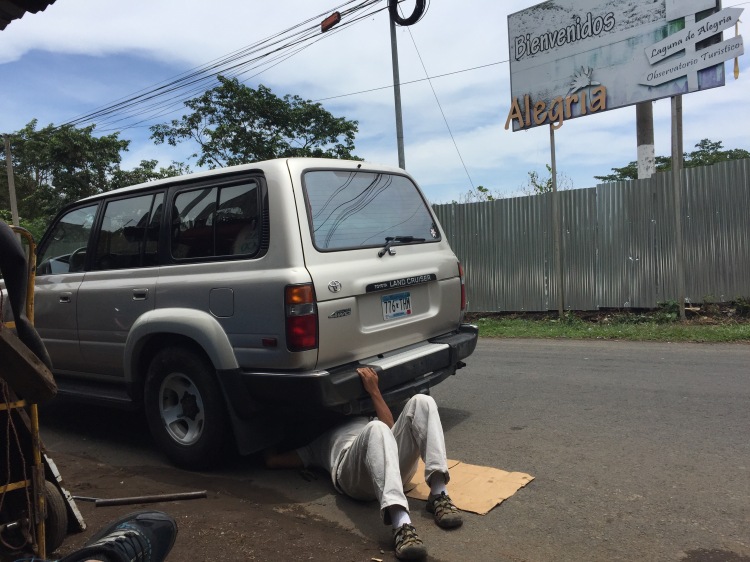
That problem sorted (for now…), we drove to Perquín. Arriving at the Perkin Lenca hotel, we settled into the hammocks directly outside our room and watched the afternoon’s rain showers. Yes, it’s now rainy season, and you can almost count on the showers lasting from after lunch until dinner. If the sun doesn’t come out, this can have a pleasant effect on the temperature. If it does come out, everything starts steaming, including yours truly.
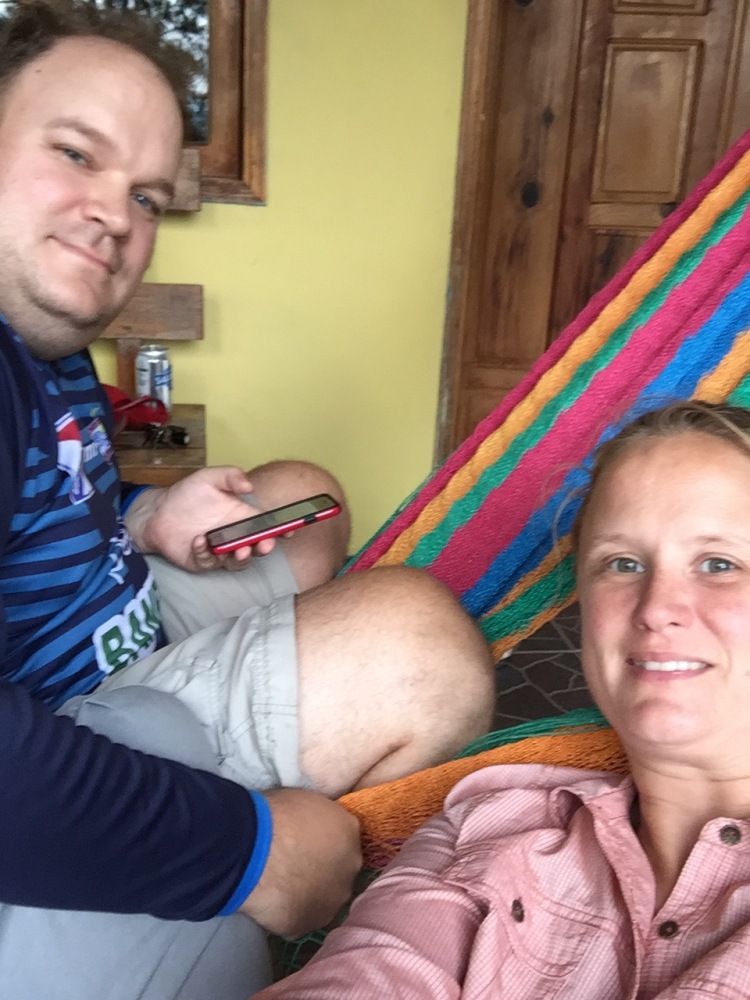
The primary goal in Perquín, as mentioned, was to visit the revolutionary museum. We wanted a bit of perspective that didn’t follow the military’s perspective, and we were not disappointed. There are really two museums in Perquín: the first is the “official” guerilla museum, and the second is a reconstruction of a guerilla encampment. It seems like the kind of situation where pooling resources together and sharing the profits would make sense – ironically there seems to be some kind of internecine feud, perhaps because the encampment museum dares to offer such capitalist frivolities as a zipline and various wooden bridges to cross adventurously. (By the way, I crossed these, and Melanie did not – an unusual role reversal, in case you’re keeping score.)

Combined, the museums have many relics, including bombs dropped by the US, wreckage of various planes and helicopters, radios, and of course many pictures and propaganda pieces. The US involvement in El Salvador did not go unnoticed elsewhere in the politically tense 1980s – plenty of the posters and protests we saw were (West-)German. To me, scanning through the exhibits and curiously short sighted Reagan quotations, it seemed like Laos or Guatemala all over again.
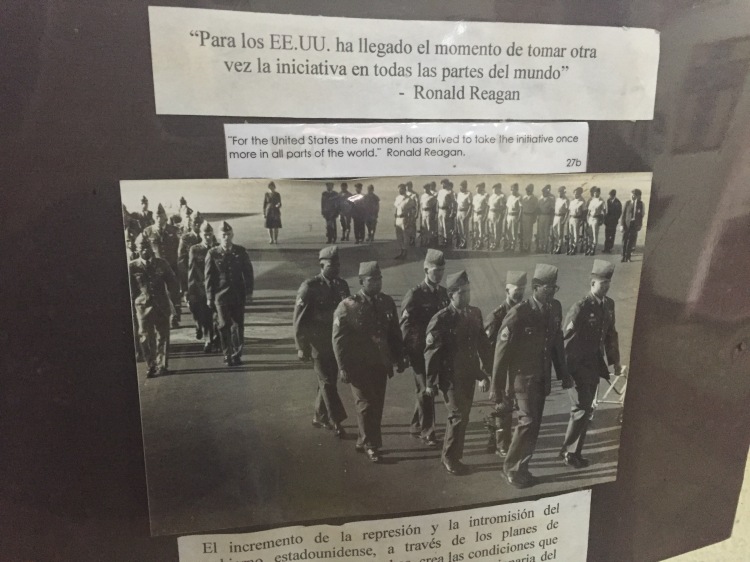
The US involvement in El Salvador was regrettable, one-sided support for what, at its root, was a local conflict about resource sharing – a debate that was at least 350 years old at that point (dating back to the arrival of the Spanish), but had been cast in the colors of communism/capitalism that week, to the short term benefit of the then-El Salvador government. Treating poor people like human beings and making sure they can feed themselves and their families, and giving them an education – these are basic human rights, and do not automatically indicate you’ve gone communist. (Remember this next time Trump or his frenemies start flapping their mouths about someone getting more than they’re “owed.”)

On the second day, we drove to El Mozote, the site of an infamous massacre of more than a thousand indigenous people by the then-El Salvador government (led, reportedly, by US-trained elite El Salvadoran soldiers). As with many such massacres throughout history, the perpetrators hoped that such brutality would serve as an example to those who would upend the social order – but probably just increased the resolve of those fighting injustice. Unlike most such massacres, there were survivors to tell the tale. INCREDIBLY, the El Salvador and US government (in the form of Reagan himself!) denied this massacre took place, and it took until the end of the civil war for forensic teams to determine that the eyewitnesses weren’t lying.
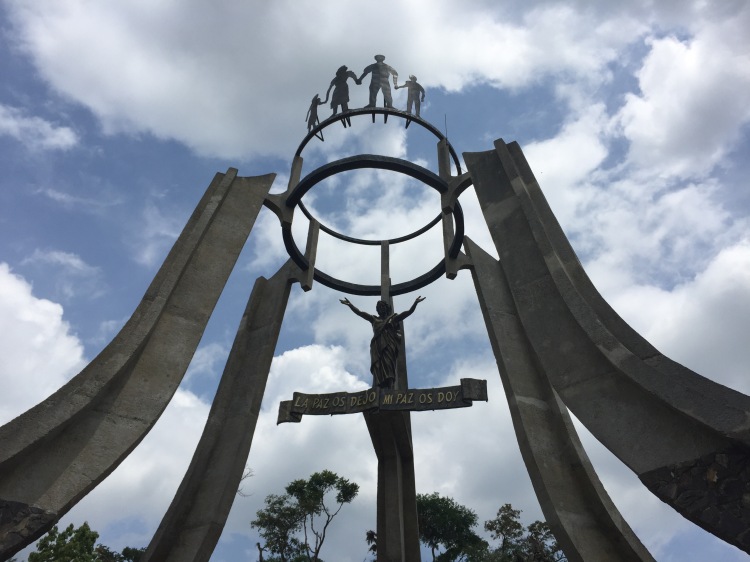
We retired again to our hammocks and let the rain fall. Our next day would take us through a short slice of Honduras and onwards towards the Nicaraguan mountains, where no doubt more regrettable history awaited – but also more adventure.
